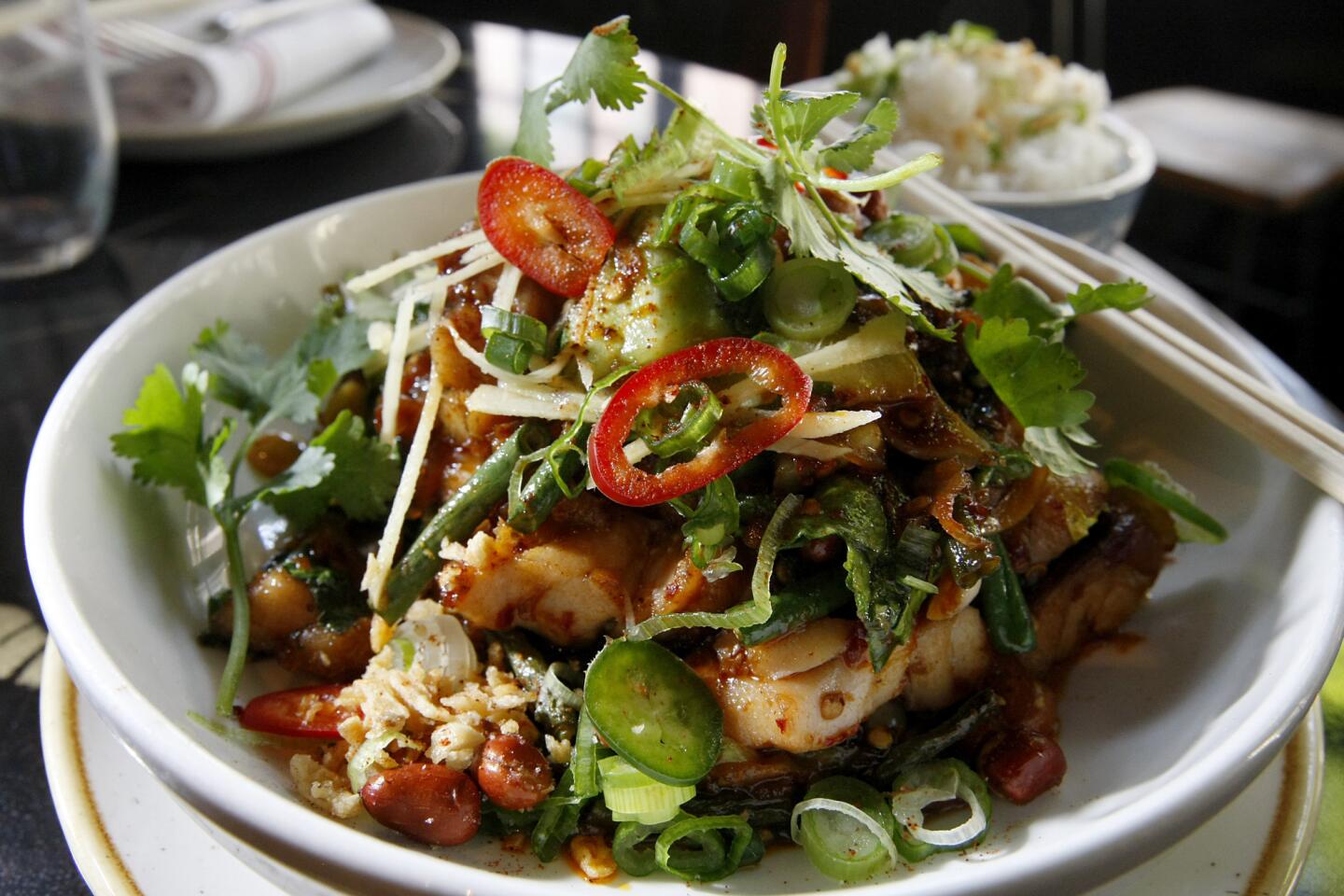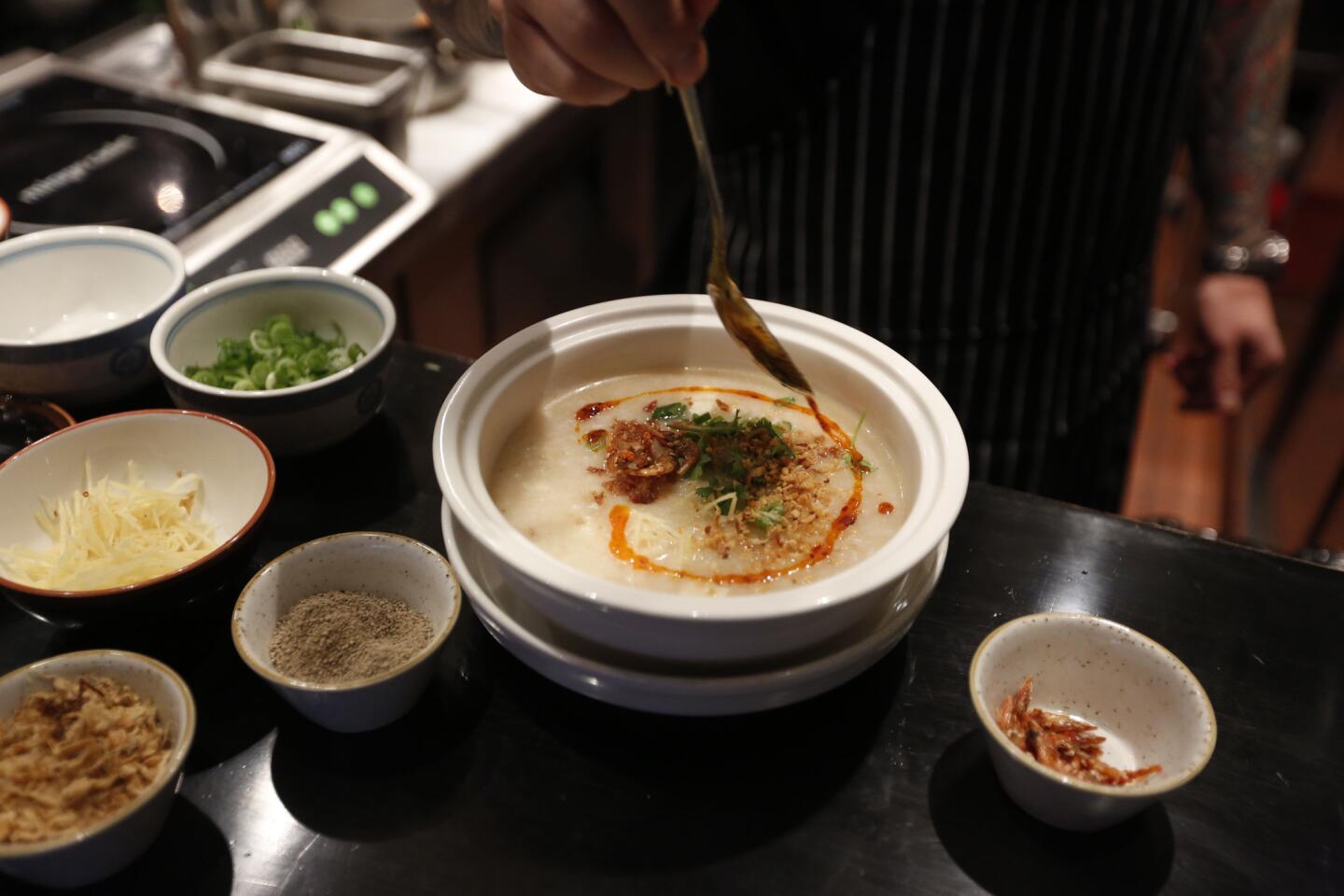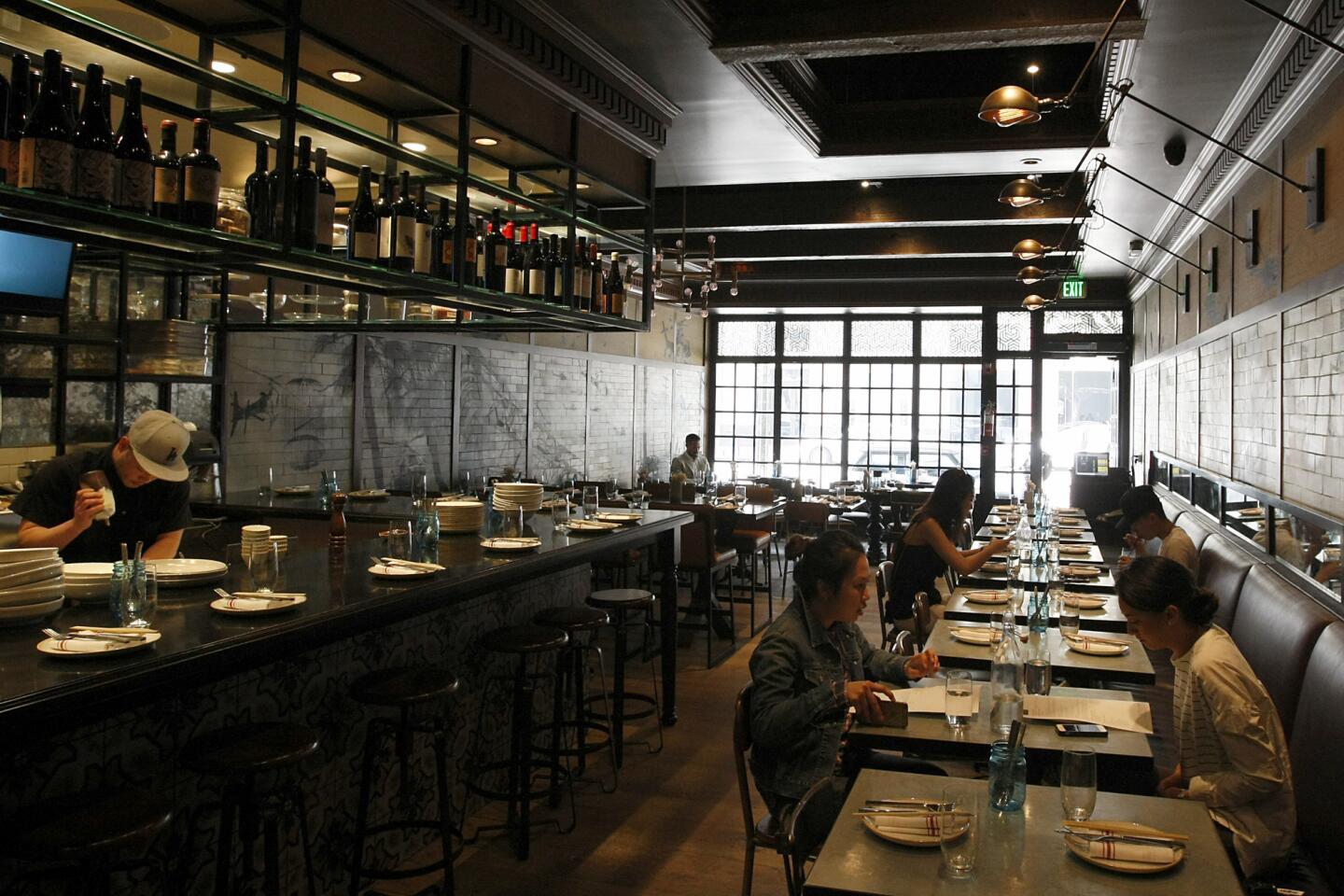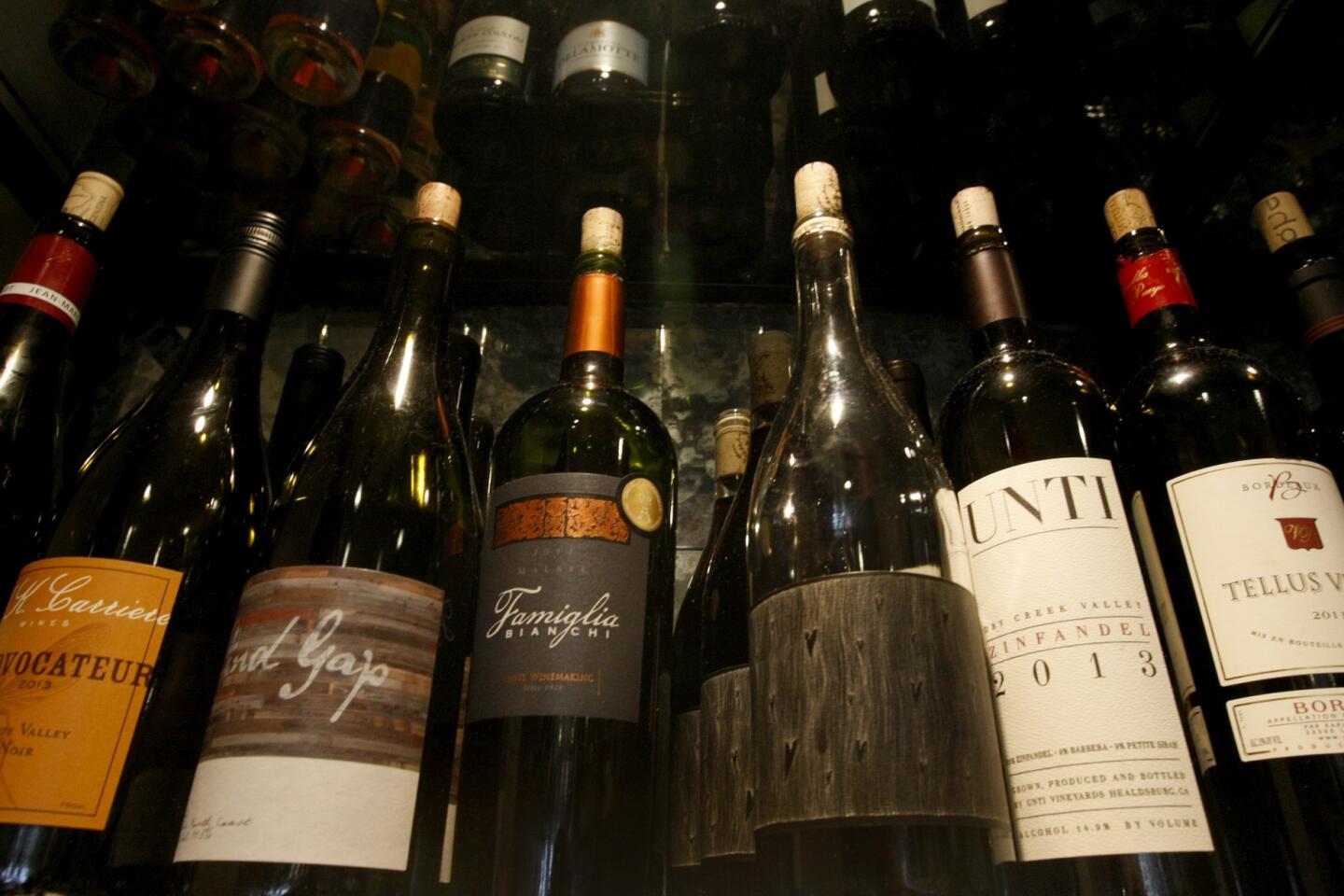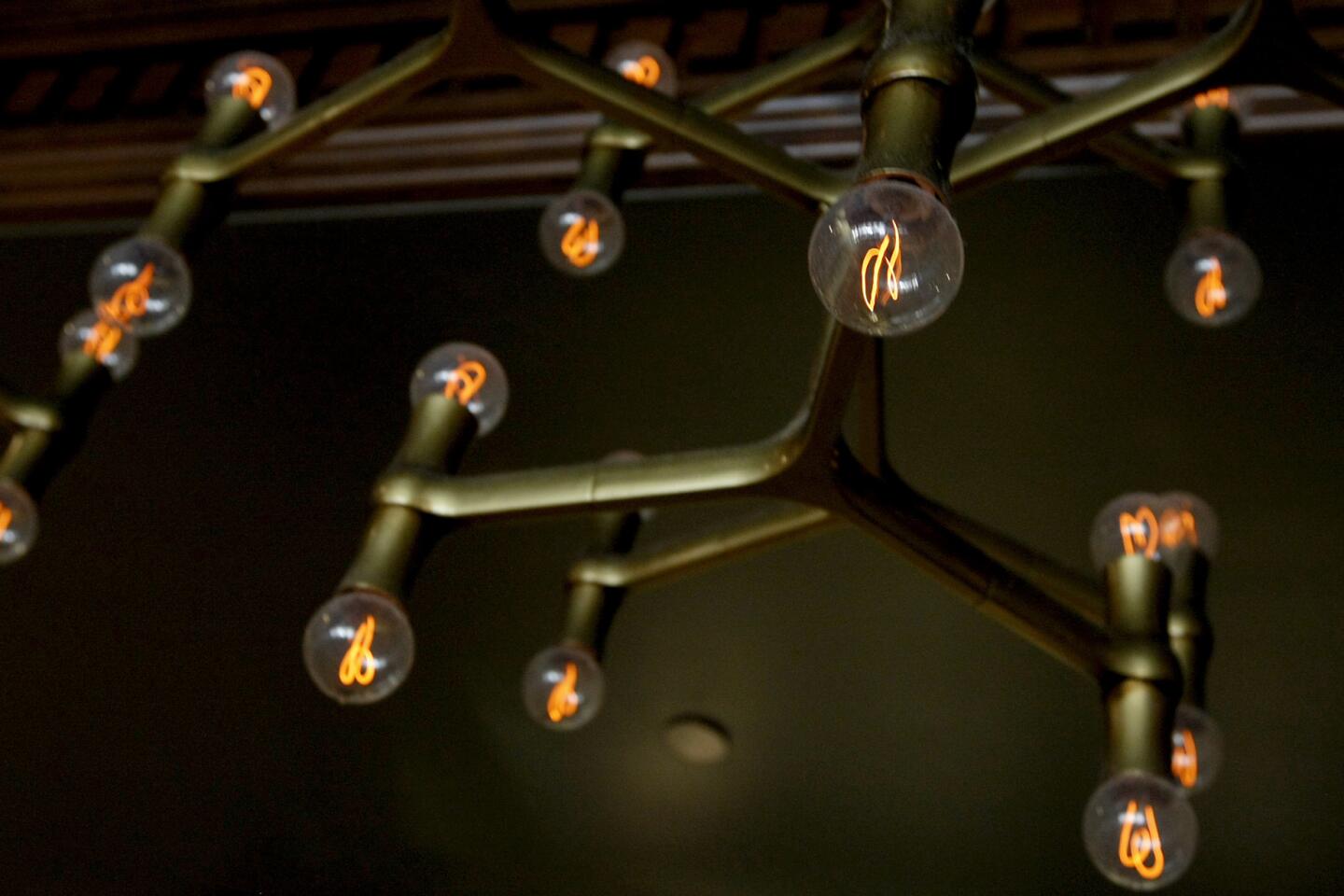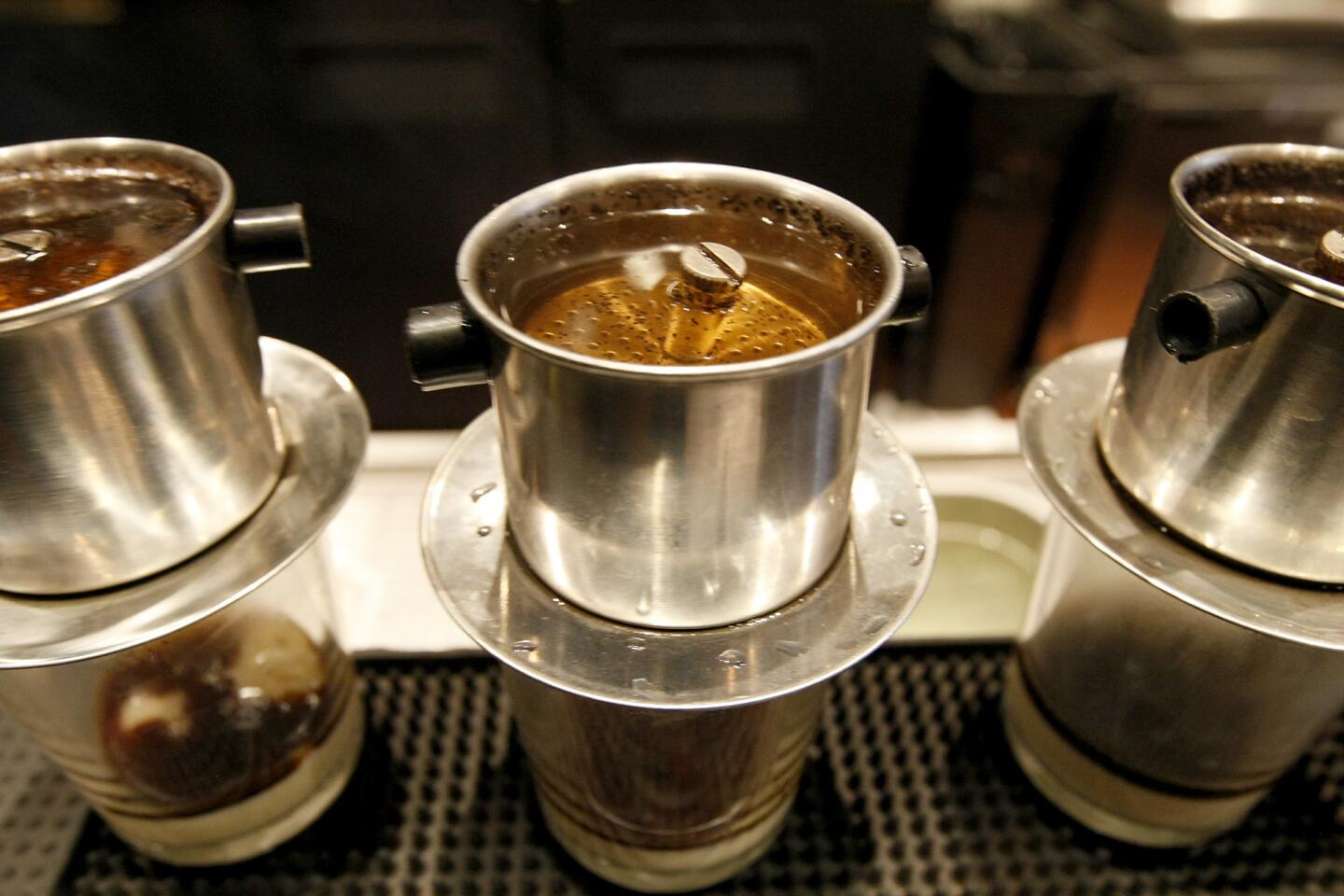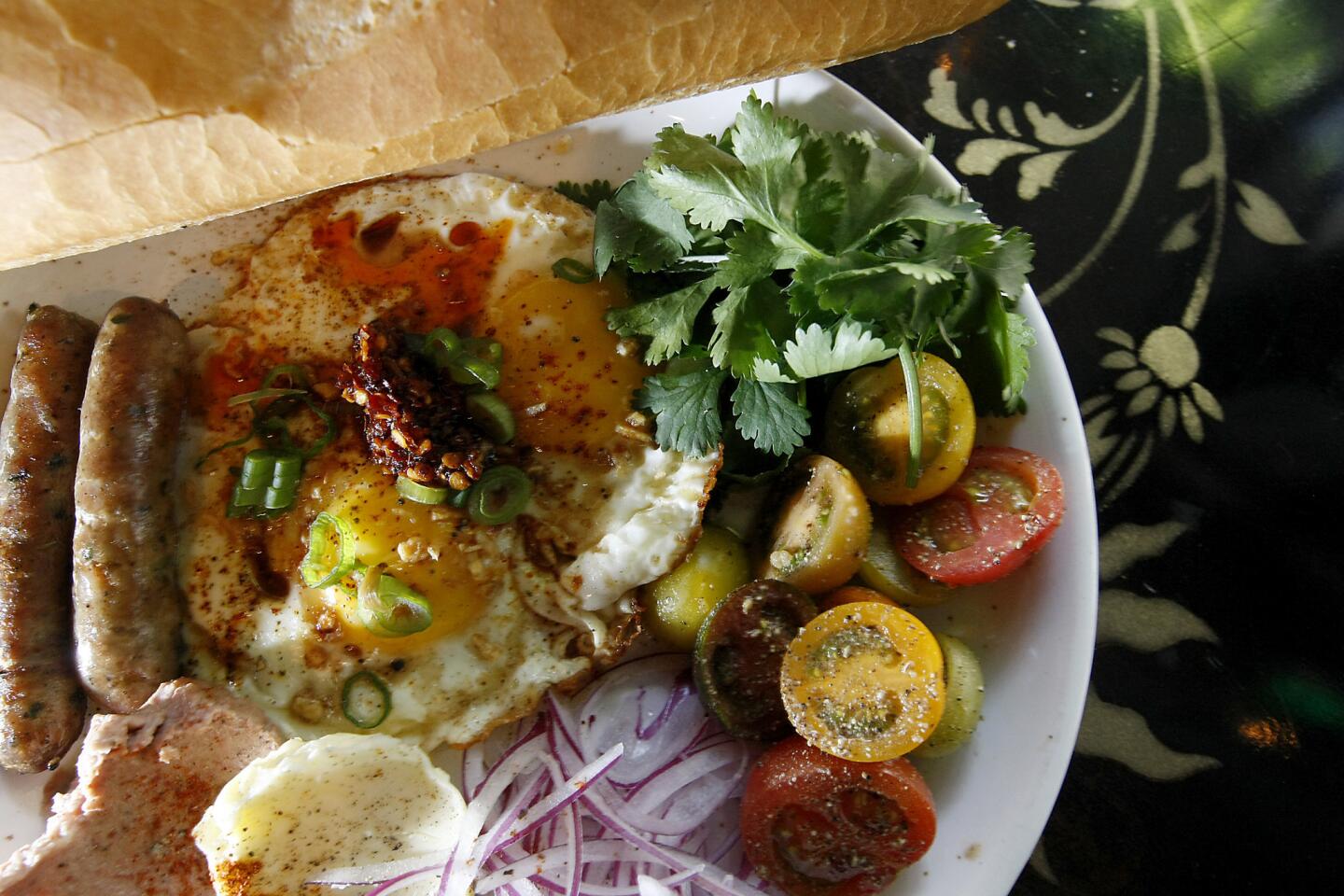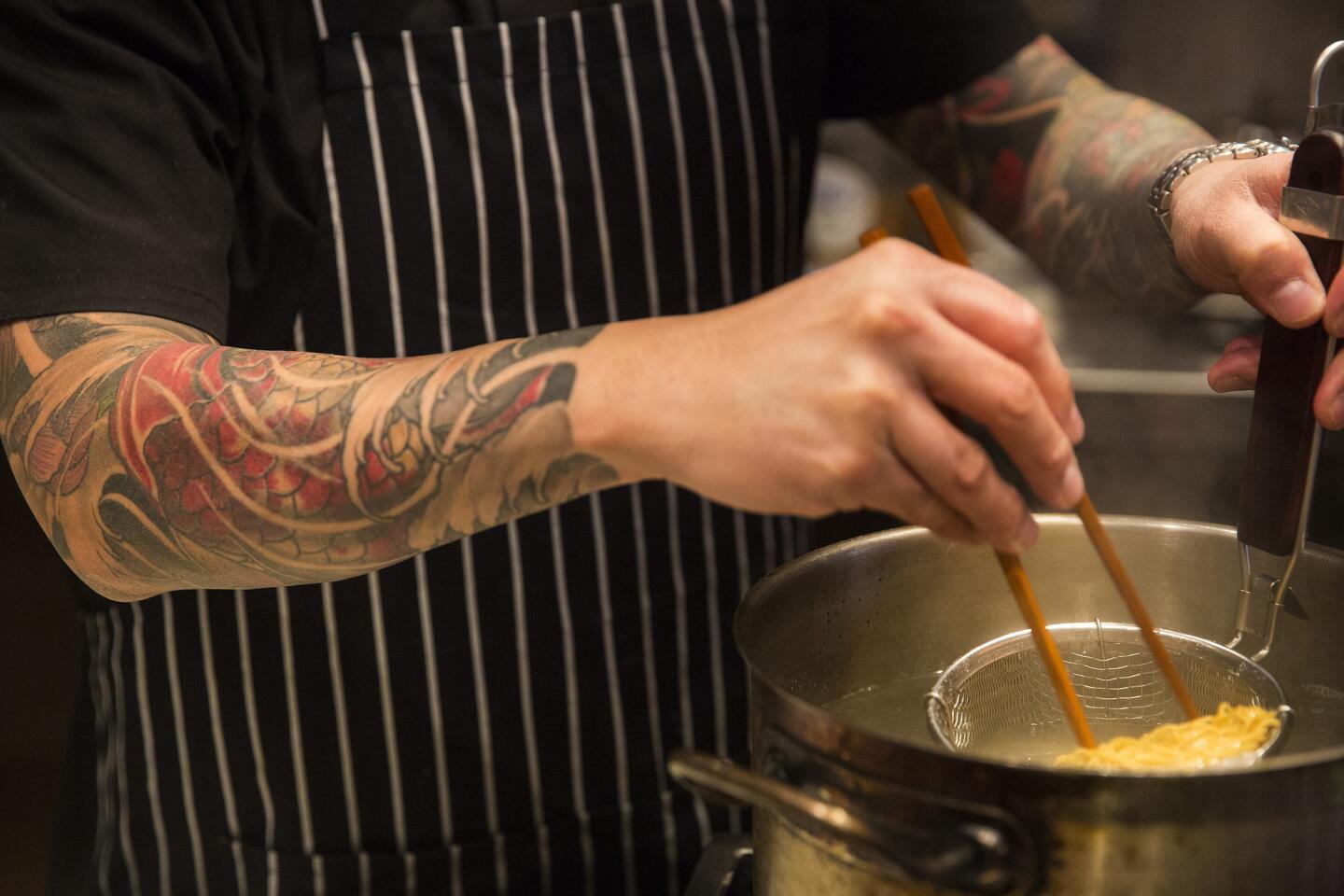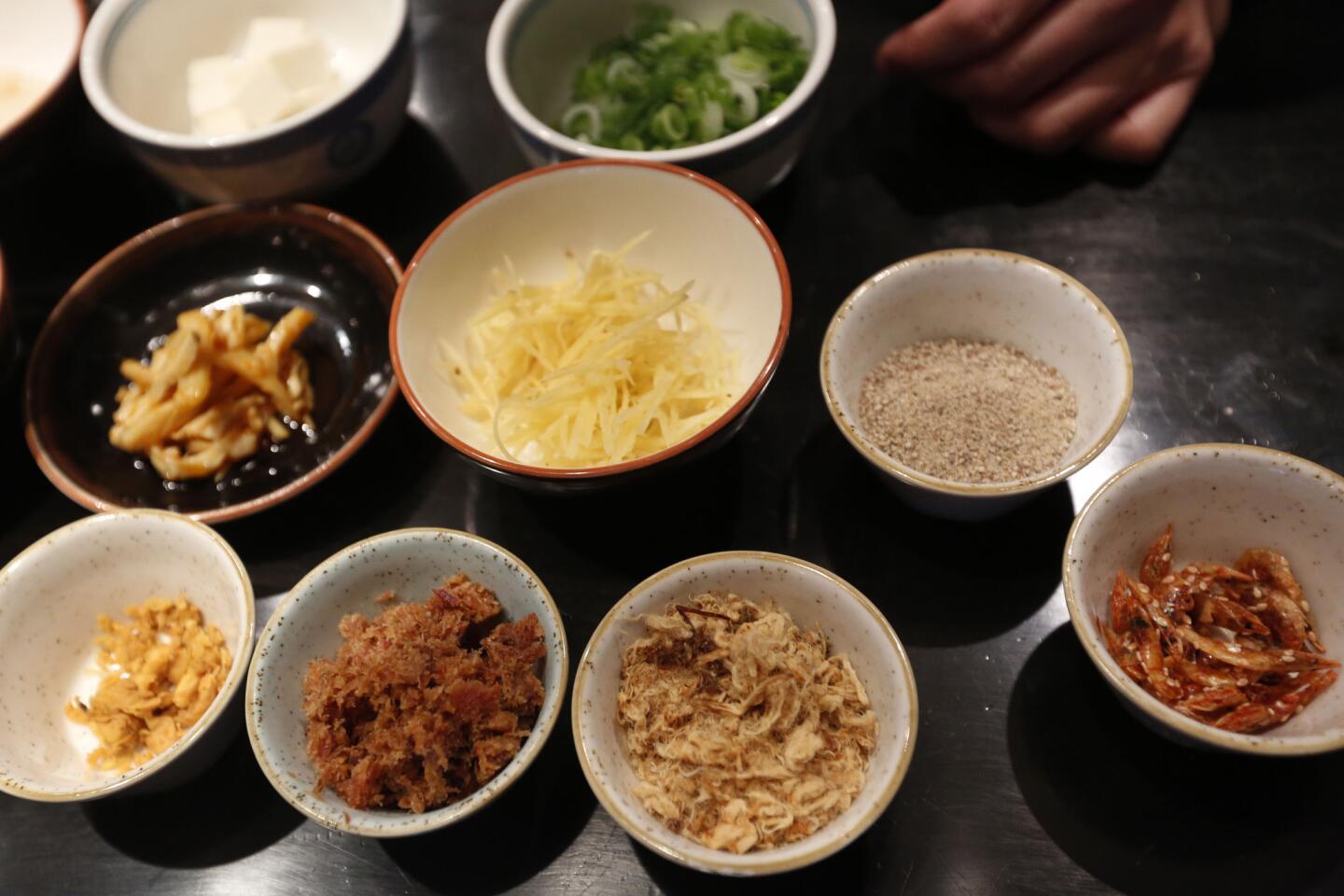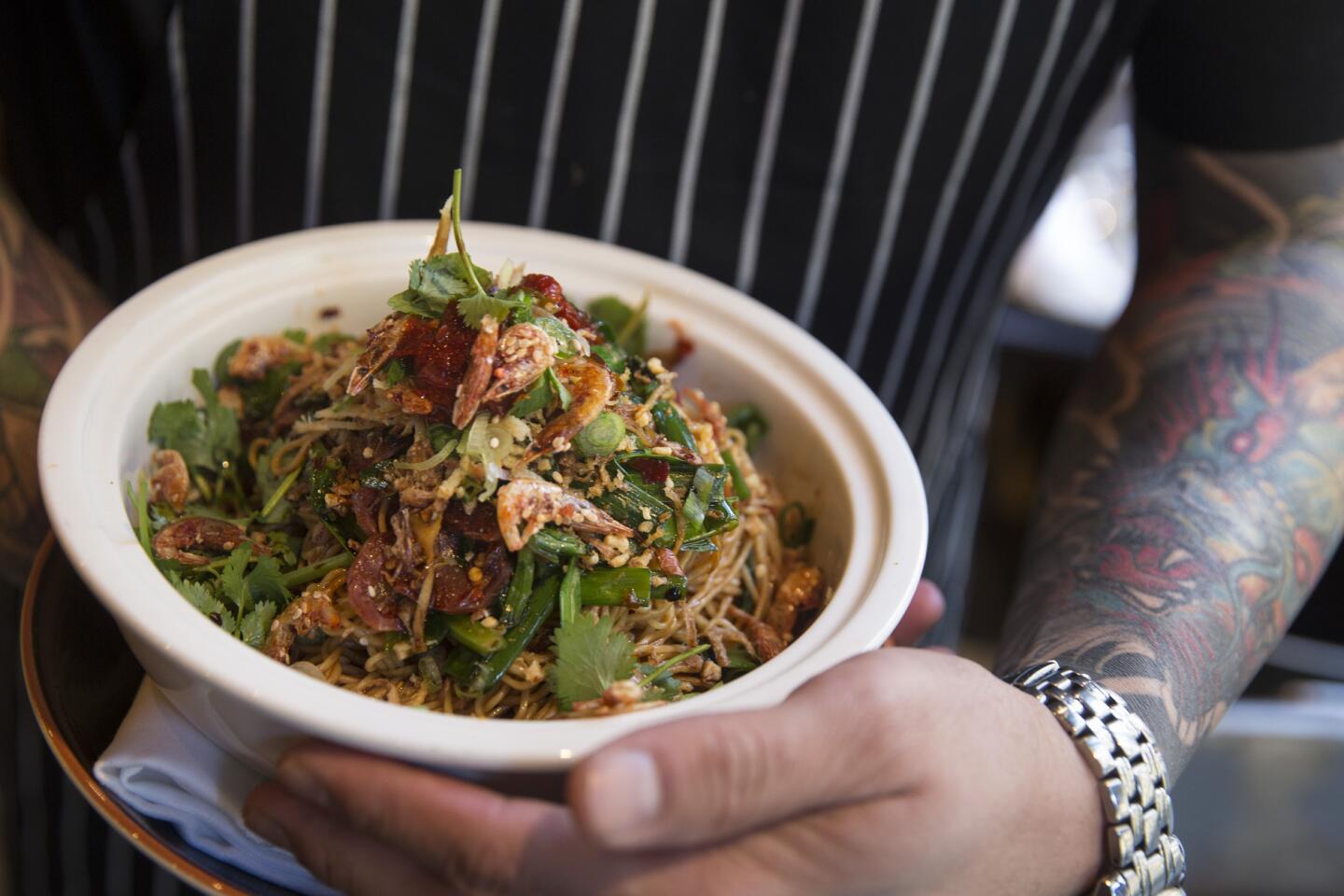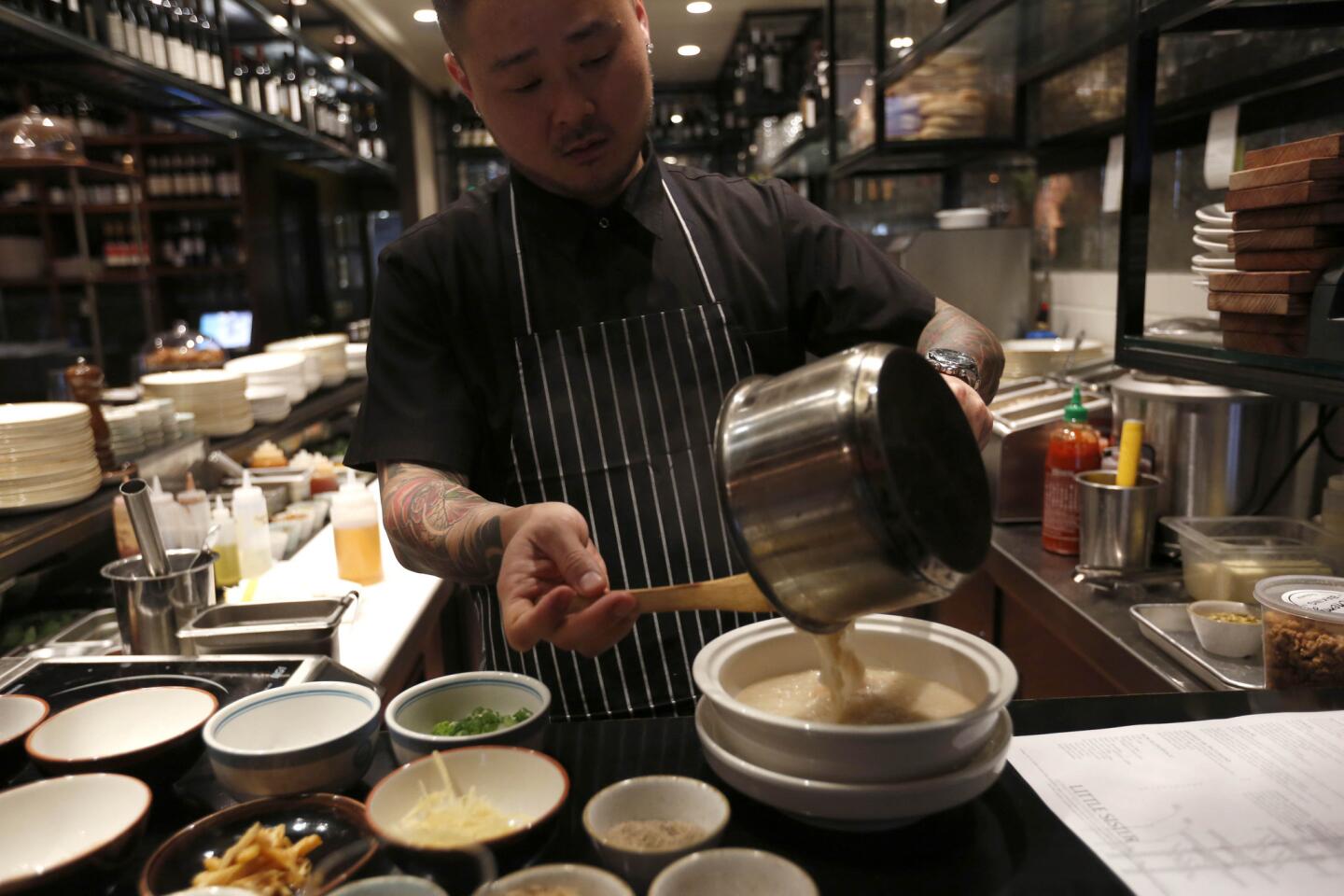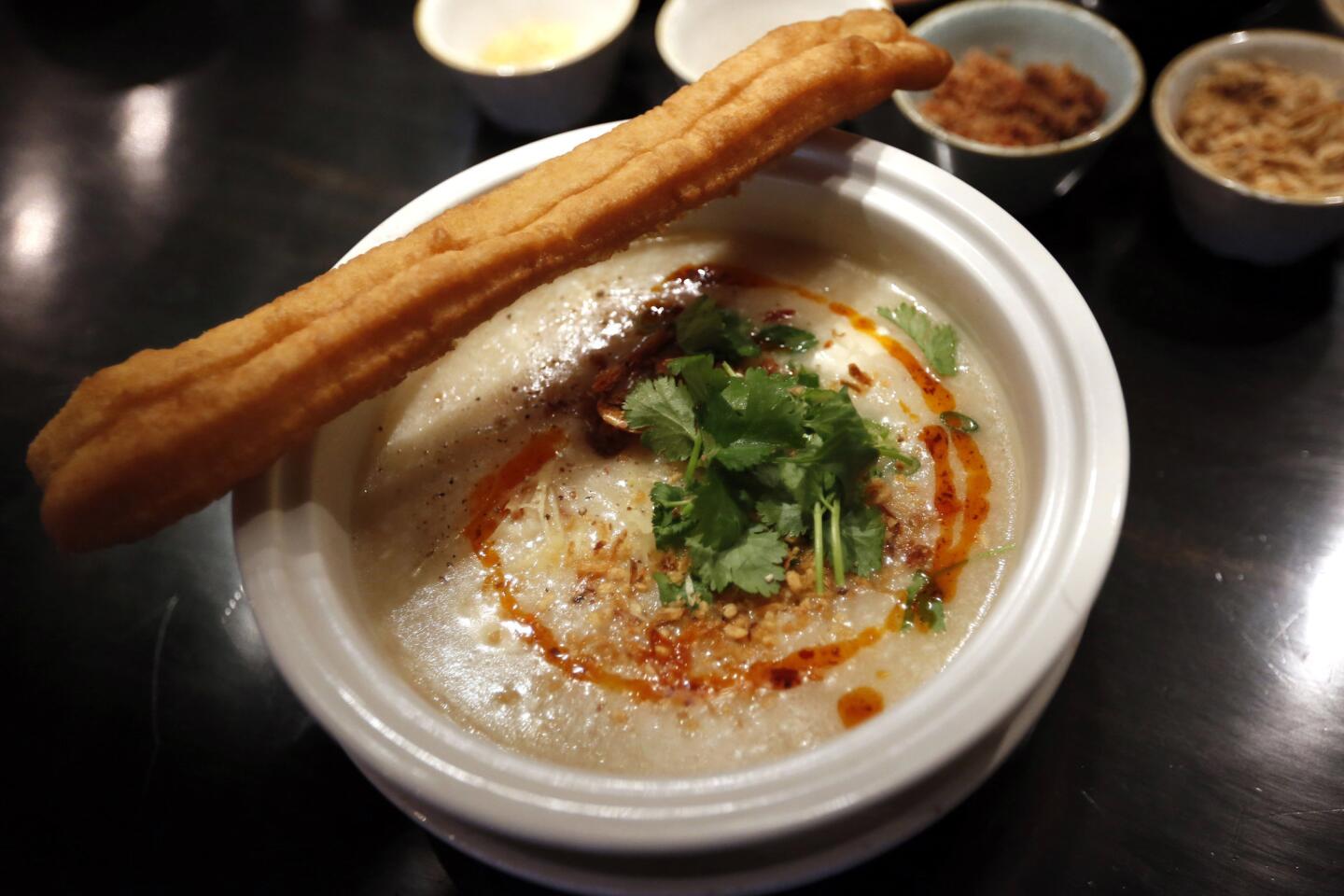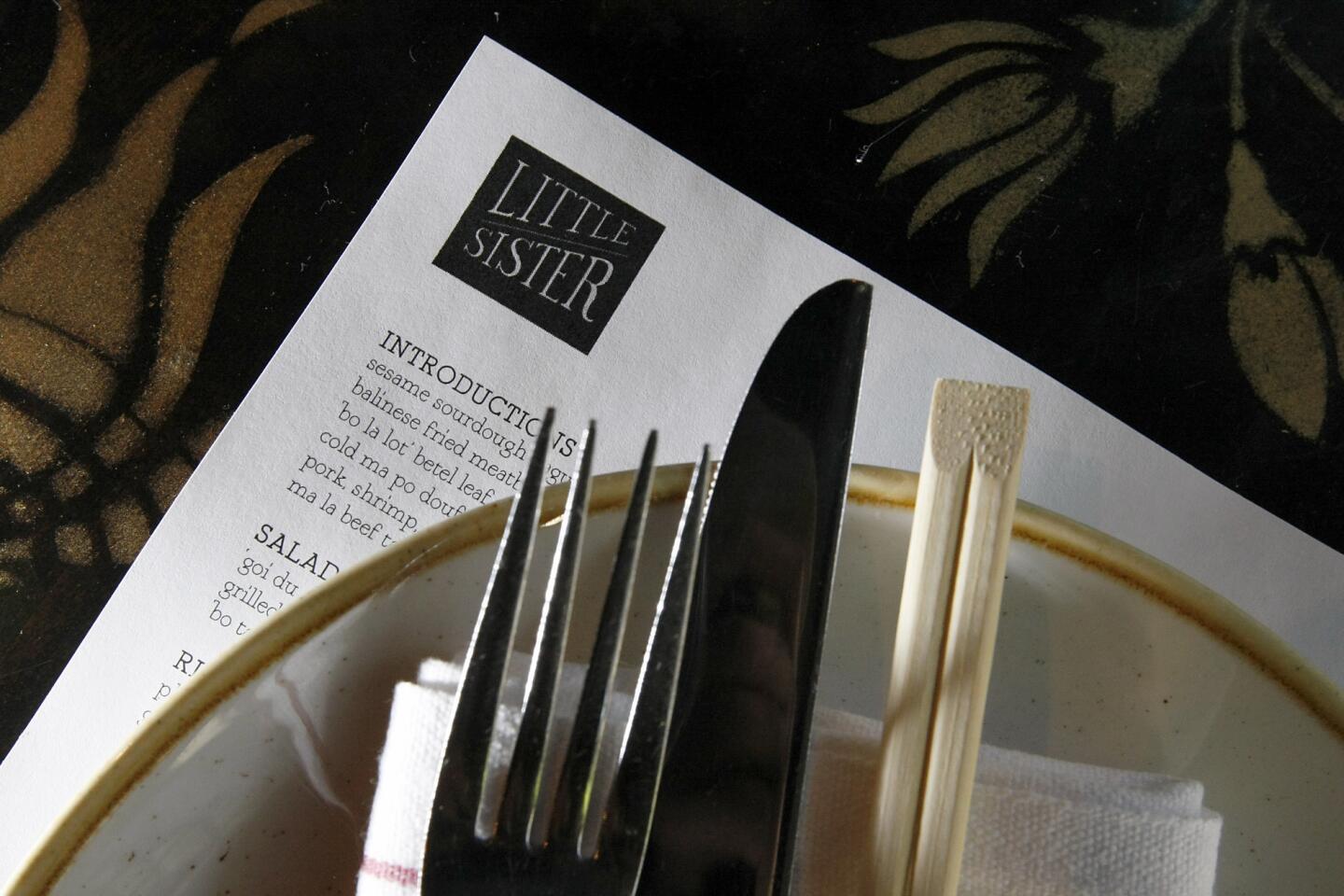Review: Little Sister Downtown has addictive lemon grass chicken, a gonzo banh mi and good congee
- Share via
My editor likes Little Sister Downtown an awful lot, you should probably know, and she has managed to eat there at least 15 times since it opened in late fall. Midday interview? Little Sister. Breakfast meeting? Little Sister. Supper with the kids? Little Sister. If she could get away with it, I suspect she would probably edit the section from one of the sun-dappled tables up front in the narrow restaurant, away from the open kitchen and the paintings of helicopters and murderous butterflies.
She is mostly fixated on the congee, a thick, Chinese-style rice porridge the restaurant serves at breakfast and lunch. There are cheaper congees in town — also way more expensive ones — but the Little Sister version is unusually satisfying, spiked with shrimp, soft tofu and baby scallops, perhaps, or salted cod with stracciatella-like strands of egg white, or poached chicken. The congee is less funky than the kind you get at places like Har Lam Kee or Delicious Food Corner, and the nuggets of fried dough that come with it are as reminiscent of New Orleans beignets as the classic youtiao, but the tart pickles are crunchy and nicely fermented, and the strong Vietnamese iced coffee you can order to go with it is at least a step or two up from the super-sweet Hong Kong-style coffee you’d get across town. I especially like the duck congee, based on a dark, well reduced stock that actually has the smack of recently roasted duck.

Congee is accompanied by a “Chinese savory doughnut.”
The restaurant is a branch of the popular Little Sister in Manhattan Beach, a Vietnamese-leaning bistro at the heart of the new Beach Cities scene. The chef is Tin Vuong, who grew up in the San Gabriel Valley, worked his way up through grand hotel kitchens, and is also behind Abigaile, Dia de Campo and Steak & Whisky in the South Bay. In the original Little Sister, Vuong became well known for a kind of anti-fusion cooking, like raw beef hand-chopped with pear and pine nuts in the manner of the Korean raw-beef dish yuk hwe but spanked with Sichuan peppercorns like something out of Chengdu; fried “Balinese” meatballs that could have doubled as Lebanese kibbe; and pea shoots sautéed with dried scallops and chile in a fresh interpretation of a Hong Kong XO sauce, all of which are on the menu at the new restaurant.
The most crowd-pleasing dish is probably the lemon grass chicken — not the simple stir-fry you used to see on two Vietnamese menus out of three, but fried chicken tossed with chopped herbs and crisp bits of fried garlic; like a bar snack, it is impossible to stop eating. The most puzzling dish is probably the pho banh cuon, which is the simmered beef associated with pho wrapped into clumsy rice noodle rolls that are neither as good as pho or as banh cuon. (The pho itself here is just ordinary; save your craving for a trip to Pho 79 or Pho Filet.)
Vuong may be working the same riffs as other second-generation anti-fusion chefs in the Los Angeles area, but where the cooking of Bryant Ng and Sang Yoon often shows a suave French polish, his dishes tend toward a certain rude vitality, sometimes deliberately unfinished — a bowl of organy fried sweetbreads on a bed of aggressively spiced ramen noodles almost dares you to like it — and sometimes just a little more fishy, tart or acerbic than you are used to finding outside the San Gabriel Valley or Little Saigon.
So the dipping sauce Vuong serves with his dense, salty imperial rolls, his take on the Vietnamese cha gio, is powerfully sour, not at all like the gentle fish sauce dressing you might expect. But the dish of coconut-braised pork and quail eggs over rice, a staple of Vietnamese home cooking, is as mellow and plain as it might be at grandmother’s house.
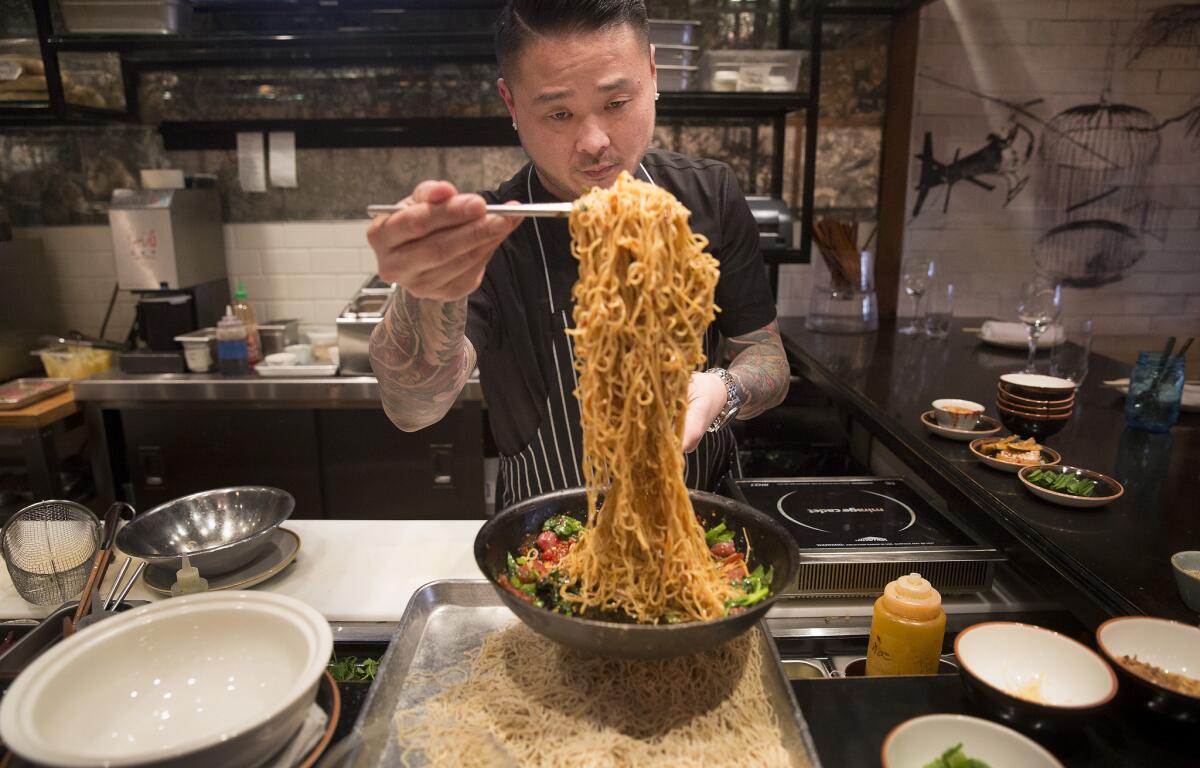
Chef Tin Vuong prepares long life noodles, a Chinese New Year staple.
And Vuong is in love with the possibilities of fermentation, and you would not be wrong to add his pickled cabbage with peanuts, chopped 1,000-year eggs with chile, or diced vegetables with Sichuan peppercorns to almost anything on the menu. He wraps salt-cod fried rice, also a favorite at Mission Chinese in New York, into an omelet. He slivers sweet Vietnamese beef jerky into narrow strips and lays it over spicy-sweet papaya salad, a nice version of a Vietnamese street food favorite. His #SGV Banh Mi is a gonzo take on the popular sandwich, combining Vietnamese charcuterie, pickles and a scoop of luscious liver mousse in a light, crisp bun, sloshing on aioli, then layering it with garlicky slices of fried pork. It is not a diet sandwich. And like the congee, it is only available for breakfast and lunch.
Little Sister
An outpost of the Manhattan Beach Vietnamese anti-fusion restaurant opens in DTLA.
Location: 523 W. 7th St., Los Angeles, (213) 628-3146, www.littlesisterla.com
Prices: Snacks $5-$12; salads $11-$15; vegetables $9-$14; meat and seafood $11-$23; noodles and rice $14-$23; desserts $8.
Details: Open daily, 10 a.m. to 10 p.m. Credit cards accepted. Beer and wine. Street parking. (There are pay lots a block south of the restaurant on South Grand Avenue.)
Recommended dishes: Duck congee (breakfast and lunch only); #SGV banh mi (lunch only); ma la beef tartare; steamed black cod with fermented flavors; lemon grass chicken.
More to Read
Eat your way across L.A.
Get our weekly Tasting Notes newsletter for reviews, news and more.
You may occasionally receive promotional content from the Los Angeles Times.
